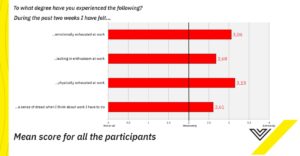A Go-to Guide for Preventing Burnout in Veterinarians
Veterinary expertise is in higher demand than ever before. Countless clinics across the nation are competing with one another for valuable clients who expect nothing short of flawless expertise when it comes to treating their pets. One consequence of this flurry of business is that veterinary professionals are finding themselves overworked, exhausted, and dealing with professional and personal burnout at an unprecedented rate.
Patient satisfaction can only be guaranteed by happy professionals who are fairly treated and justly rewarded. Review this go-to guide for preventing veterinary burnout in your workforce.
Understanding the Causes of Burnout
Professional and personal burnout can only be avoided if its root causes are understood. According to a leading burnout investigation survey, there are many reasons that young veterinary professionals are experiencing burnout at high levels. These hard-working professionals identified physical and emotional exhaustion. They also identified professional alienation to be leading causes of workplace stress. To ensure your workforce isn’t burdened by burnout, practice owners and consolidators should take the following steps.
-
- Ensure transparent and flexible scheduling. Professionals must be forewarned of overtime requests and uninterrupted work periods. Coordinating with veterinary professionals to ensure they have adequate time off is essential when it comes to avoiding physical exhaustion.
- Pay attention to the emotional well-being of the workforce. Veterinary experts who are around sick and dying patients may be suffering from severe emotional stress. Provide resources to employees which ensure they’re not alone when it comes to grappling with the emotional toll of working in animal healthcare.
- Guarantee fair wages. Young veterinary professionals are suffering from burnout at an incredibly high rate. They’re often dealing with crippling student debt and rising costs of living. Providing your workforce with adequate compensation and attractive benefits will lure in the best talent and ensure they remain at your practice.

While physical and emotional exhaustion is the leading indicators of burnout, a sense of dissatisfaction is also a common result of burnout. Veterinary professionals may also report a sense of dread consuming them in their daily operations. Managers must carefully cultivate the emotional intelligence needed to detect these problems as they arise. This is so that professionals can be given the time off and emotional support they need to remain effective at work.
Lending a Helping Hand
Once they understand the causes of burnout, managers must identify the specific positions which are most vulnerable to burn out before they can lend a helping hand. While any veterinary professional can suffer from burnout, not all positions are reporting equal levels of workplace dissatisfaction. Vet technicians routinely report higher levels of burnout than doctors, for instance. Management professionals such as office managers and receptionists are also more likely to report lower levels of workplace satisfaction than veterinarians.
Practice owners seeking to diminish the effects of burnout should also learn to recognize compassion fatigue. Constant exposure to sick, injured, and dying animals can generate compassion fatigue that renders a person incapable of feeling. Technicians who handle euthanasia, surgeries, and the regular treatment of severely injured patients should be given extra attention. This would be to ensure they don’t become isolated and depressed.
Finally, managers should ensure that the “backroom” professionals who contribute to positive patient outcomes but don’t receive face-to-face gratitude from clients are appreciated. Many professionals suffering from burnout report a feeling of underappreciation. Often because others may receive kudos while they’re left ignored. Making sure that each and every team member is appreciated and rewarded for their help is a necessary part of burnout prevention.
Guide to Beating Burnout
Burnout is particularly likely to occur during a crisis. This can occur when veterinarians are expected to work long hours in difficult conditions. The COVID-19 pandemic pushed many younger professionals to their limit for this exact reason. Beating burnout requires constant vigilance on the part of managers and owners. It also requires extra dedication to workforce wellbeing during periods of high demand.
Companies like VIS are working hard to solve professional burnout in the veterinary field. By looking after the interests of all veterinary professionals, we can build a better industry that offers a greater array of services to more patients than ever before. Beating burnout is a challenge worthy of our attention. Success depends on everyone doing their part to ensure no one is left behind.

